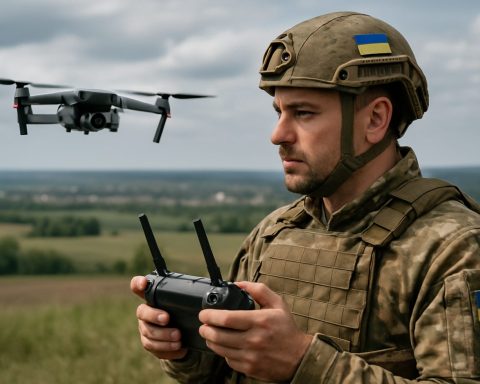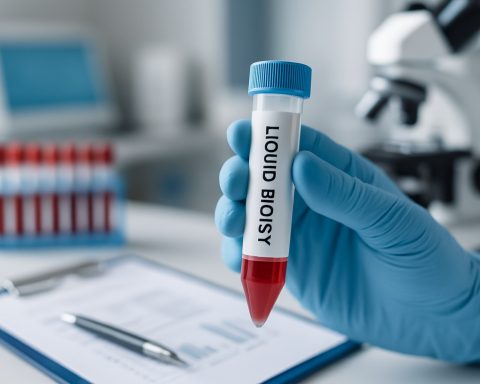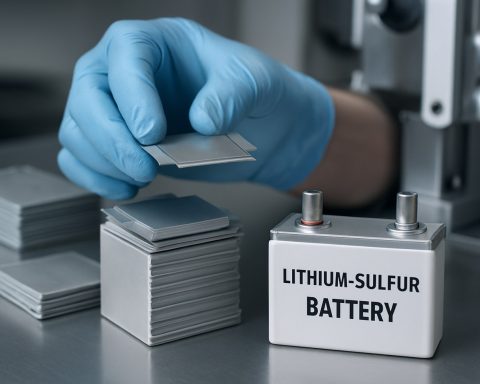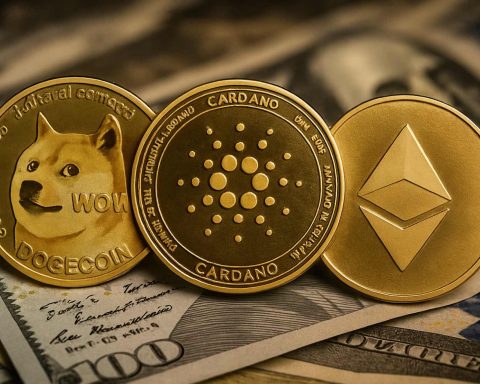- A groundbreaking lithium-ion battery technology from the University of Michigan enhances EV charging efficiency in cold temperatures down to -10°C, requiring only 10 minutes for a full charge.
- The innovative design uses a single-ion conducting glassy solid electrolyte coating, LBCO (Li₃BO₃-Li₂CO₃), that integrates into current manufacturing methods without costly overhauls.
- The 20-nanometer-thick glassy coating enables fast and smooth lithium ion transfers, effectively preventing lithium plating and ensuring over 97% capacity retention across charging cycles.
- State-of-the-art atomic layer deposition wraps the glassy coating around battery cells, maintaining 70% to 55% state of charge even at rapid charge rates, whereas conventional batteries drop below 50% quickly.
- This advance extends battery life, enhances reliability, and facilitates the adoption of EVs in cold regions, driving us closer to a future of efficient green transportation.
An exciting breakthrough in battery technology promises to reshape the landscape of electric vehicles (EVs). Picture this: a world where charging your electric vehicle feels like a pit stop, even in sub-zero temperatures. Thanks to visionary researchers at the University of Michigan, that reality is inching closer.
In the fight against one of electric vehicles’ most persistent challenges—charging efficiency in low temperatures—the University of Michigan team has emerged victorious. Their revolutionary lithium-ion battery makes the wait for a full charge nearly obsolete, functioning effortlessly in temperatures as harsh as -10°C. Capable of going from empty to full in just 10 short minutes, this battery heralds a new era for EVs.
So, how does this marvel of engineering work its cold-weather magic? The solution lies in its innovative composition—a single-ion conducting glassy solid electrolyte coating. Unlike conventional approaches that demand expensive overhauls in battery production, this technique seamlessly integrates into existing manufacturing processes.
Conventionally, EV batteries involve the movement of lithium ions through a liquid electrolyte, a process hampered by the cold. Previous attempts to enhance charging speeds have stumbled, like a runner in thick snow, over obstacles like lithium plating—a troublesome build-up akin to a traffic jam on the anode. This accumulates when fast charging in cold conditions presses the lithium ions into a disordered metallic lithium state on the anode surface, inefficiently clogging the routes they must follow.
However, the researchers have deftly navigated this issue with a 20-nanometer-thick glassy material. This coating works wonders, maintaining over 97% capacity retention over numerous charging cycles, obliterating previous limits and stereotypes. The magic material is known as LBCO (Li₃BO₃-Li₂CO₃).
Using state-of-the-art atomic layer deposition (ALD), this ultra-thin glassy coating wraps around the battery cells, enabling fast, efficient, and smooth ionic transfers even under frostbite-inducing conditions. Like expertly carved channels in a ski slope, these paths remove blockages, speeding up the flow of lithium ions.
In rigorous tests, these batteries showcased their robust fortitude. Unlike their uncoated counterparts that sputtered below 50% capacity after just a few charging cycles, LBCO-coated batteries maintained a staggering 70% to 55% state of charge (SoC) even at the swiftest charge rates.
This monumental leap in battery technology not only promises shorter wait times at the charging station but extends the life and reliability of electric vehicles—weaving seamlessly into today’s production lines while setting the stage for tomorrow’s demands. This paves the way for doubt-free adoption of EVs in regions layered with snow and ice, bringing the dream of green transportation into sharper focus.
As these electrifying developments spearhead towards commercial reality through Michigan’s Arbor Battery Innovations, the world steers ever closer to a future where EVs can conquer even the iciest conditions without a hitch. Imagine driving through winter wonderlands, confident that your vehicle’s heart—its battery—will pulse with reliable energy and speed. This revelation isn’t just a technological leap; it represents a commitment to paving a smoother path for clean energy transport.
Revolutionary Battery Technology: How Fast-Charging EVs Could Dominate the Winter Roads
Introduction
The landscape of electric vehicles (EVs) is on the brink of transformation thanks to a groundbreaking advancement in battery technology from the University of Michigan. This development could effectively remove one of EVs’ most significant barriers—charging efficiency in cold climates. EV owners can look forward to quicker charging times, even in temperatures as low as -10°C, a feat achieved with innovative battery designs that blend seamlessly with existing manufacturing processes.
Understanding the Breakthrough
The key to this cold-weather triumph lies in the application of a single-ion conducting glassy solid electrolyte coating on lithium-ion batteries. The coating, identified as LBCO (Li₃BO₃-Li₂CO₃), circumvents the traditional pitfalls of liquid electrolyte systems that falter at low temperatures due to lithium plating. This revolutionary material allows for rapid, reliable charging cycles, maintaining over 97% capacity retention.
Features & Specs
– Fast Charging: Full charging in just 10 minutes, even in sub-zero environments.
– High Retention: Over 97% capacity retention after extensive charging cycles.
– Temperature Resilience: Operates effectively at temperatures as low as -10°C.
– Advanced Fabrication: Utilizes atomic layer deposition (ALD) for precision coating.
Real-World Use Cases
– Cold Climate Reliability: Ensures reliable vehicle performance in regions with harsh winters, promoting wider adoption of electric vehicles in areas previously deemed unsuitable.
– Rapid Urban Commutes: Enables EVs to seamlessly integrate into fast-paced urban lifestyles, reducing downtime at charging stations.
Market Prospects & Industry Trends
1. Increased Adoption of EVs: With improved cold-weather performance, EVs become more attractive to consumers in cold climates, expanding the market significantly.
2. Integration in Existing Production Lines: The technology offers cost-effective integration without requiring substantial changes to existing manufacturing setups.
3. Environmental Impact: Promotes a shift towards sustainable transportation options by addressing key logistical barriers.
Pros & Cons Overview
– Pros:
– Significant reduction in charging time.
– Improved performance in extreme temperatures.
– Longevity of battery life.
– Cons:
– Initial production costs and setup.
– Market skepticism until large-scale deployment.
Security & Sustainability
The adoption of LBCO-coated batteries aligns with global sustainability goals, reducing reliance on fossil fuels and mitigating climate change impacts. The technology is designed to integrate seamlessly into current battery production processes, ensuring a reduced environmental footprint during manufacturing.
Anticipatory Insights & Predictions
Experts project that this technology will set a new standard for EV battery performance. As production scales up, consumers can expect more affordable pricing, further incentivizing the switch to electric vehicles.
Actionable Recommendations and Quick Tips
– Consumers: Consider switching to EVs with advanced battery technology for superior cold-weather performance and fast charging.
– Manufacturers: Explore integrating this coating technology into battery production to enhance product offerings and meet market demands.
– Investors: Monitor developments from the University of Michigan and Arbor Battery Innovations for potential investment opportunities in high-impact sustainable technologies.
For those eager to keep up with the latest in electric vehicle advancements, visit University of Michigan. Readers interested in how this could affect battery manufacturing processes can explore insights at National Renewable Energy Laboratory.
As EVs continue to make significant strides in overcoming cold-weather challenges, the dream of ubiquitous, reliable green transportation becomes increasingly achievable. With these rapid advancements, the future of sustainable mobility looks bright and promising.










